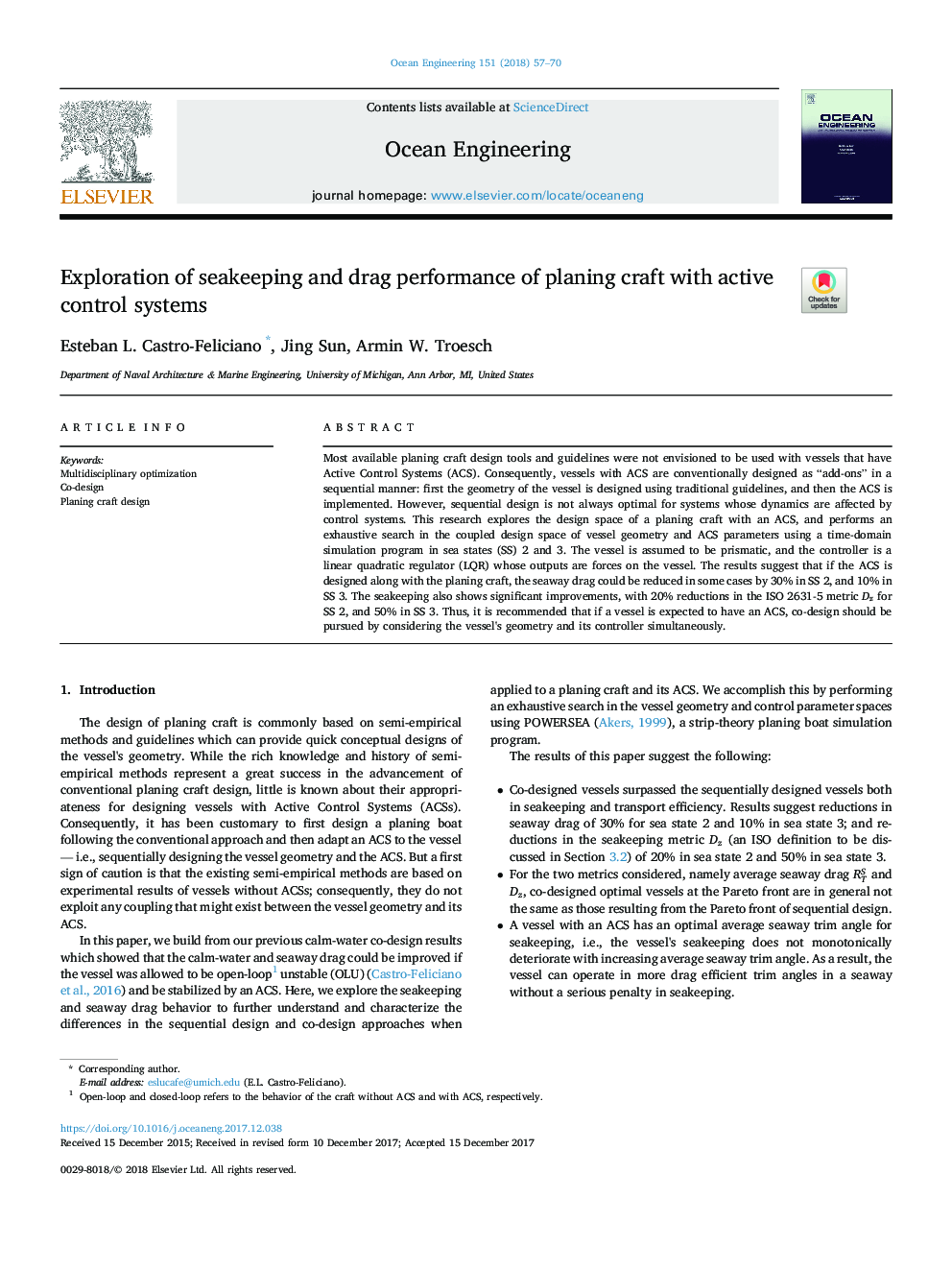| Article ID | Journal | Published Year | Pages | File Type |
|---|---|---|---|---|
| 8063233 | Ocean Engineering | 2018 | 14 Pages |
Abstract
Most available planing craft design tools and guidelines were not envisioned to be used with vessels that have Active Control Systems (ACS). Consequently, vessels with ACS are conventionally designed as “add-ons” in a sequential manner: first the geometry of the vessel is designed using traditional guidelines, and then the ACS is implemented. However, sequential design is not always optimal for systems whose dynamics are affected by control systems. This research explores the design space of a planing craft with an ACS, and performs an exhaustive search in the coupled design space of vessel geometry and ACS parameters using a time-domain simulation program in sea states (SS) 2 and 3. The vessel is assumed to be prismatic, and the controller is a linear quadratic regulator (LQR) whose outputs are forces on the vessel. The results suggest that if the ACS is designed along with the planing craft, the seaway drag could be reduced in some cases by 30% in SS 2, and 10% in SS 3. The seakeeping also shows significant improvements, with 20% reductions in the ISO 2631-5 metric Dz for SS 2, and 50% in SS 3. Thus, it is recommended that if a vessel is expected to have an ACS, co-design should be pursued by considering the vessel's geometry and its controller simultaneously.
Related Topics
Physical Sciences and Engineering
Engineering
Ocean Engineering
Authors
Esteban L. Castro-Feliciano, Jing Sun, Armin W. Troesch,
